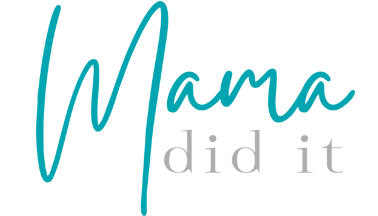Here’s your step-by-step guide on how to swaddle your baby like a pro!
Swaddling is a great comfort technique for your baby during the first two months of the fourth trimester. Because of this, it’s important to master the skill of a great swaddle! This technique will soothe a fussy baby and also promote better sleep. Here’s your step-by-step guide on how to swaddle your baby like a pro.
As a mother-baby nurse and mom of three, I’ve had many years to work on my swaddle technique. I now teach new parents how to swaddle their newborn like a baby burrito. It’s got to be the best part of the job! Some of the other wonderful parts are giving newborns their first bath and getting to hold them in the nursery while mom naps.
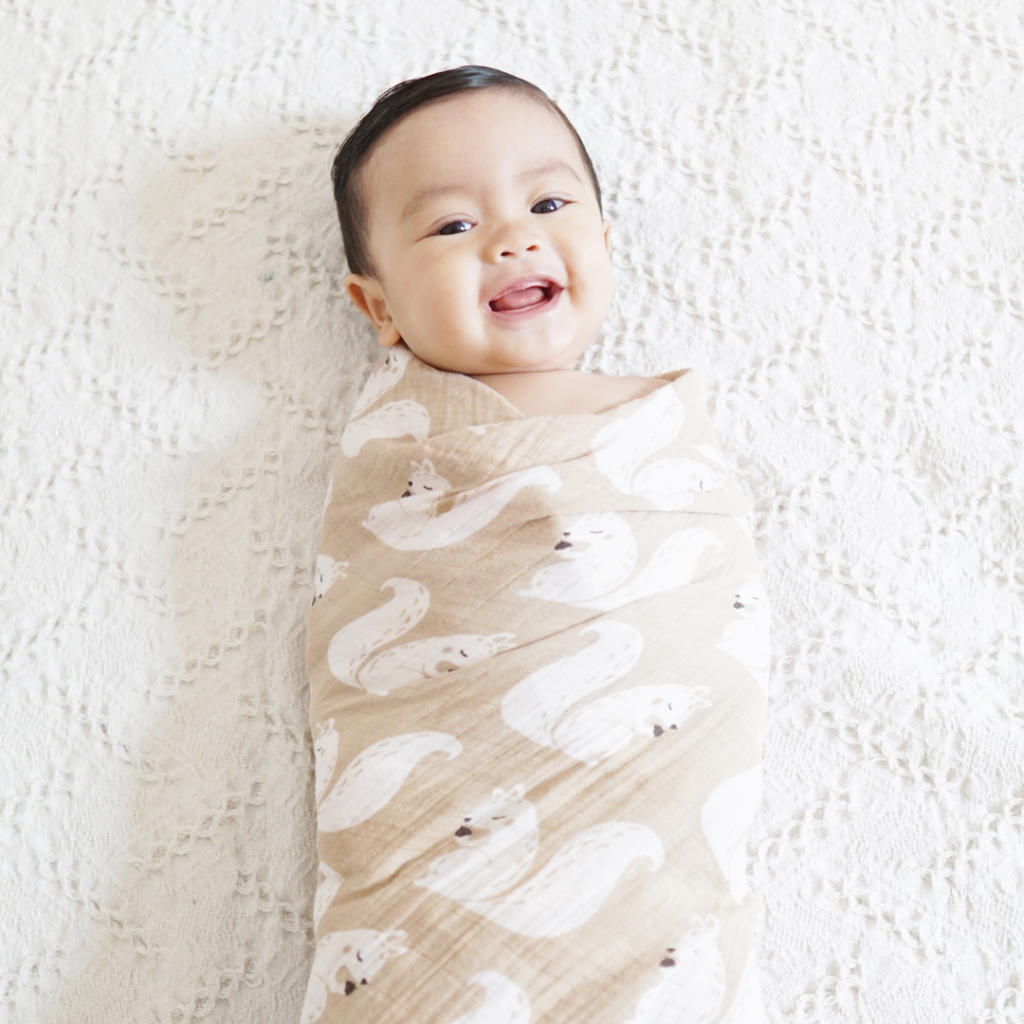
Why should I swaddle?
When you think about it, it makes sense that a baby would enjoy being swaddled. They have been super tight and cozy in your womb for months while you were pregnant. Snuggly swaddling your baby reminds them of the comfort they were used to in the coziness of the womb. Swaddling is very comforting for a newborn during the first two months of the fourth trimester. It may also help your baby sleep better.
Benefits of Swaddling
Proper swaddling can calm infants. It also can help babies learn to begin to self-soothe leading to better sleep. Swaddling also can help lessen the chance your baby will awaken itself by the Moro reflex (the startle reflex) which can lead to better sleep for everyone. Keep in mind, though it isn’t many, some babies don’t seem to enjoy being swaddled. Make sure to learn the swaddle technique when your baby is calm or sleeping. This will help you learn without feeling rushed and help your baby adjust well to it.
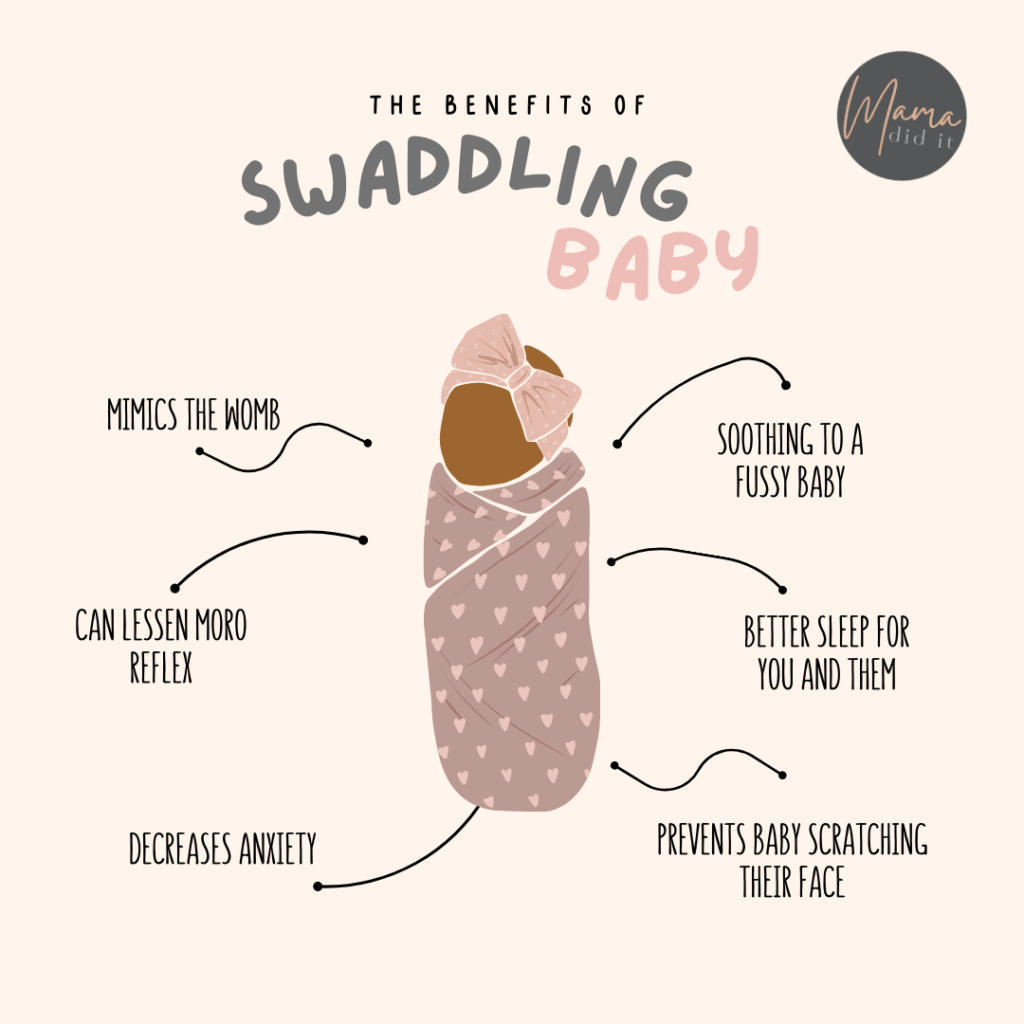
How old should babies be swaddled?
Swaddling is a great comfort technique for your newborn baby. The American Academy of Pediatrics recommends an infant be swaddled up to two months of age. Safe swaddle is important. Do not swaddle with fleece blankets. It’s ok to pull the swaddle blanket snug, but don’t pull so tight that your baby isn’t able to move its legs.
These are some of my favorite swaddle blankets: it has plenty of breathable fabric to work with and cute patterns! Using blankets that are meant as swaddle blankets is important. Adult blankets have excess fabric which can put the baby at risk for breathing problems if they manage to get it to their mouth and nose. Fleece blankets are another big no-no. This material does not stay in place when used as a swaddle. It becomes loose as the baby moves and is a suffocation hazard.
There is also the option of a swaddle blanket with velcro. It comes with a couple of shortcuts and some parents prefer these over the traditional swaddle blanket. Your hospital or birthing center will have a swaddle blanket for your baby to use while there, but you may want to pack a few for cute photos and to cover your baby in the car seat for the ride home.
Though there are different ways to swaddle, this traditional swaddle is by far my favorite. After practicing the technique a few times, you will find it is a quick swaddle technique once mastered.
Step by Step Instructions: Swaddle Technique: (The Diamond Swaddle)
- Lay your swaddling blanket out in a diamond shape on a flat surface. Fold the top corner of the blanket down and place your baby’s body with their neck at the fold-down area.
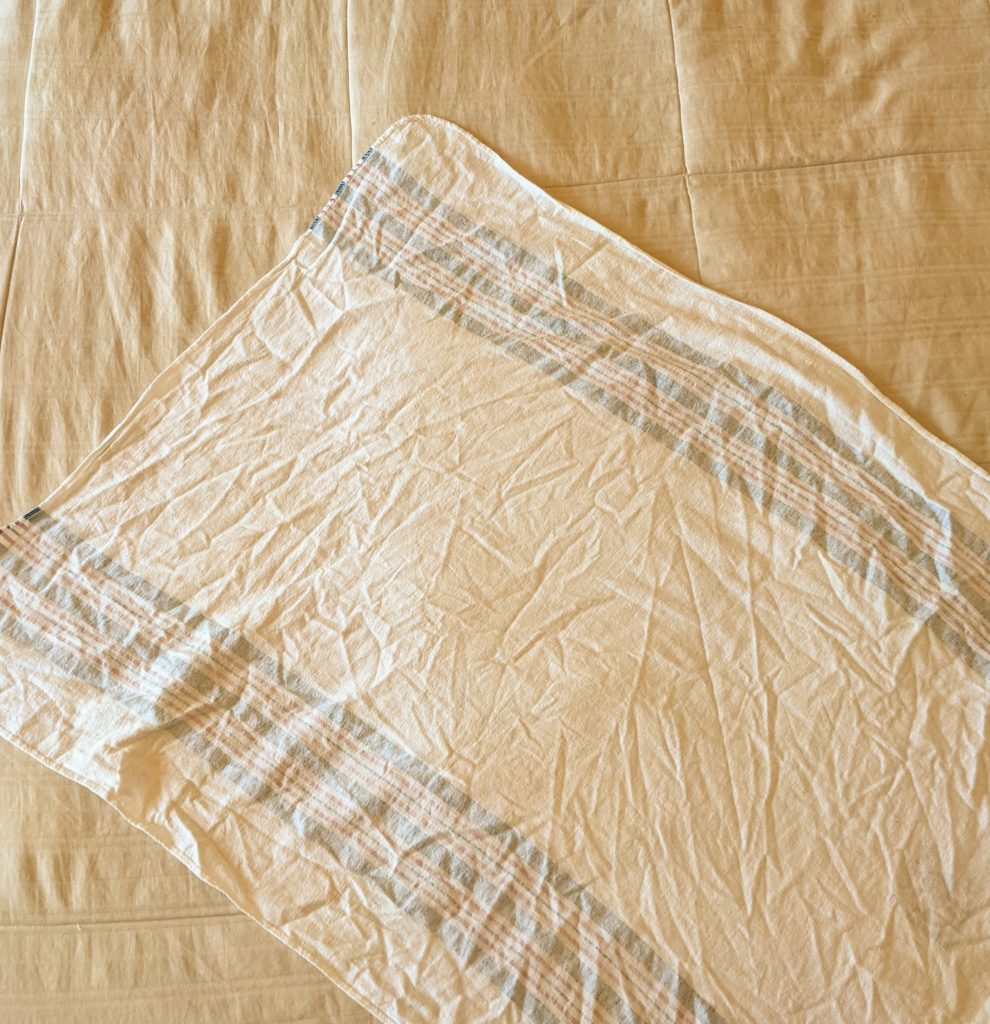
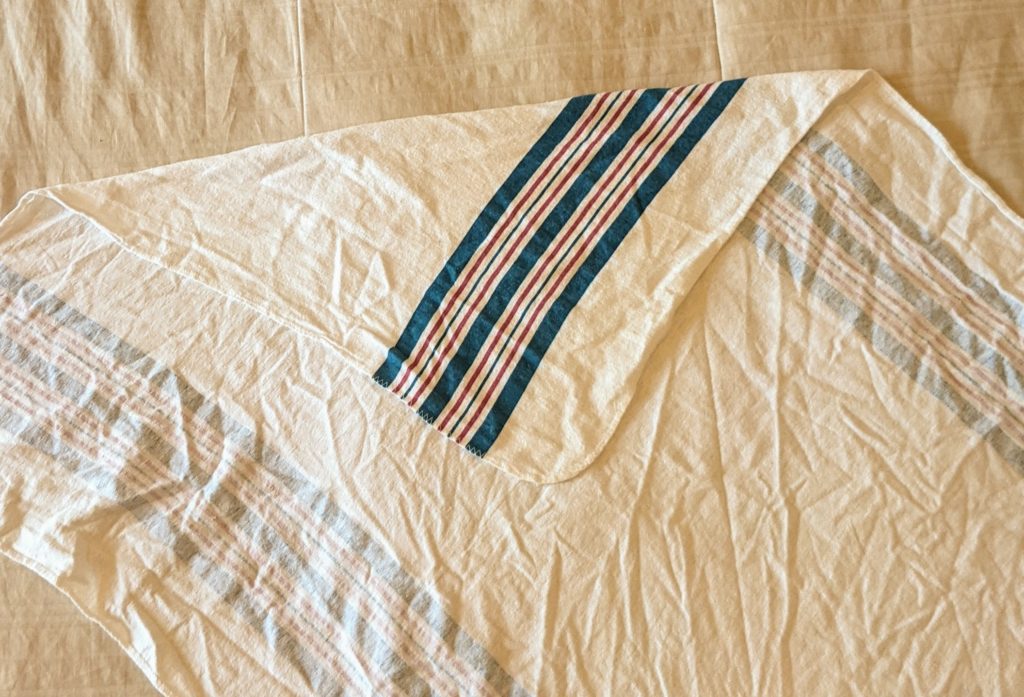
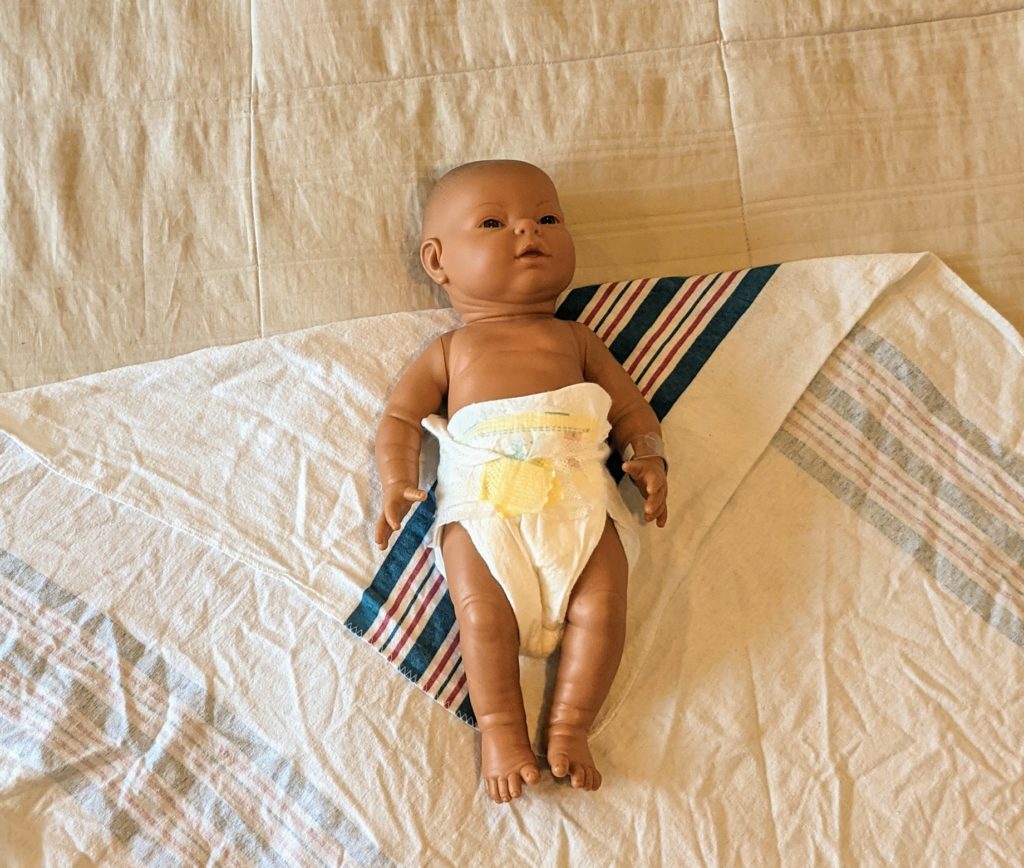
2. Take the right side of the blanket (your right), pull snug, wrap it around your baby’s chest, baby’s arms, and tuck it under their bottom.
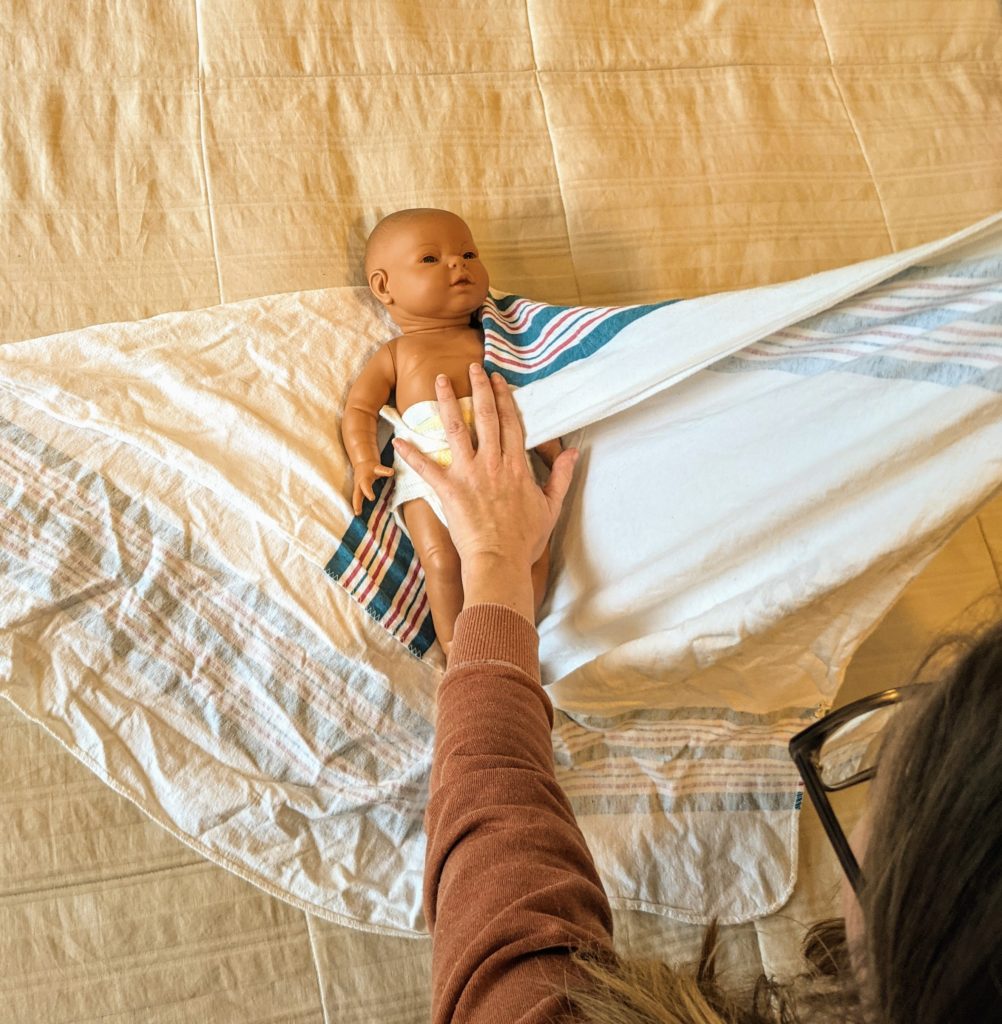
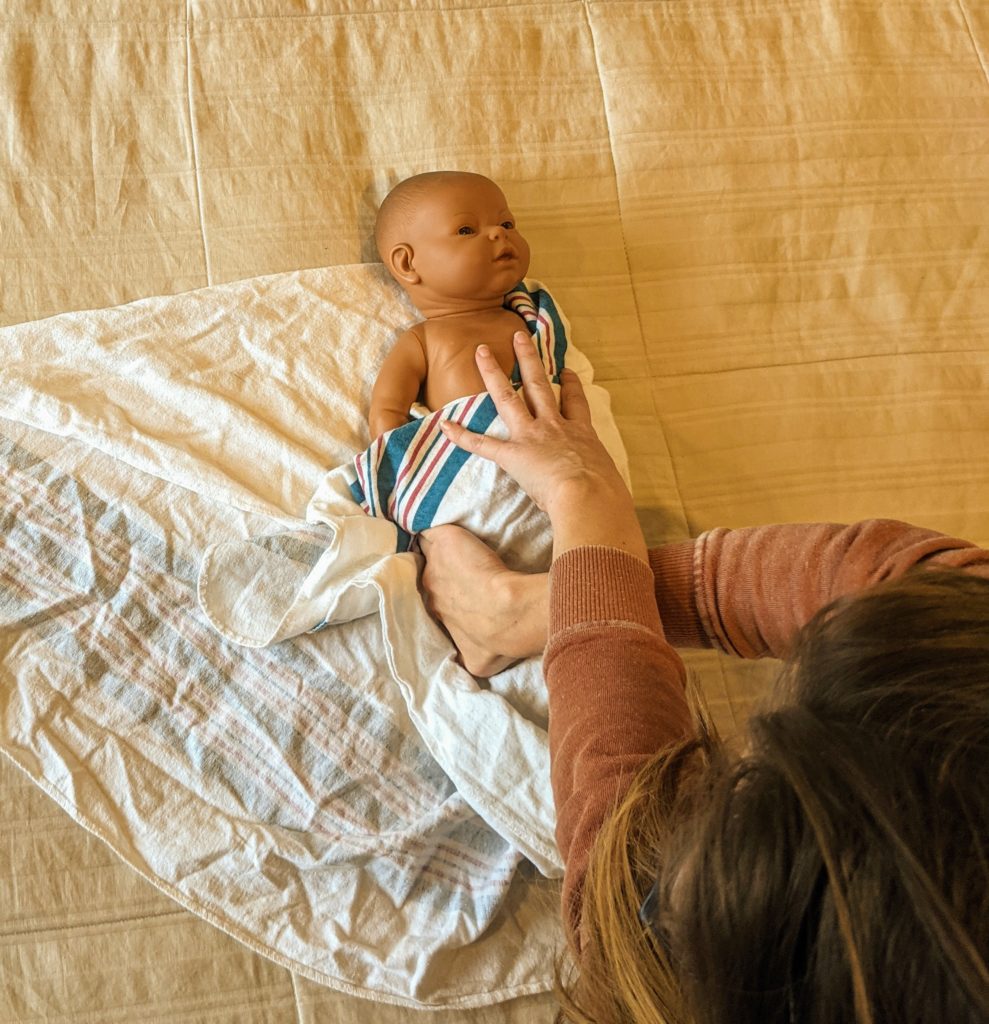
3. Pick up the bottom of the blanket, pull snug, covering baby’s legs, and tuck it behind the baby’s right shoulder.
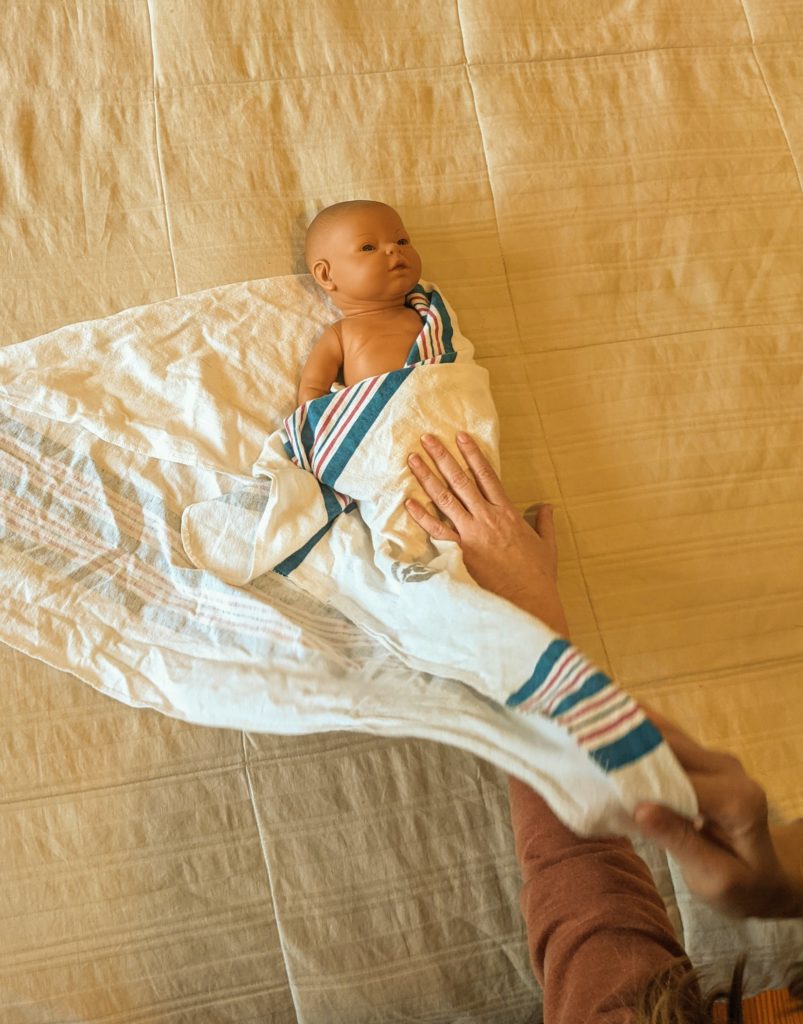
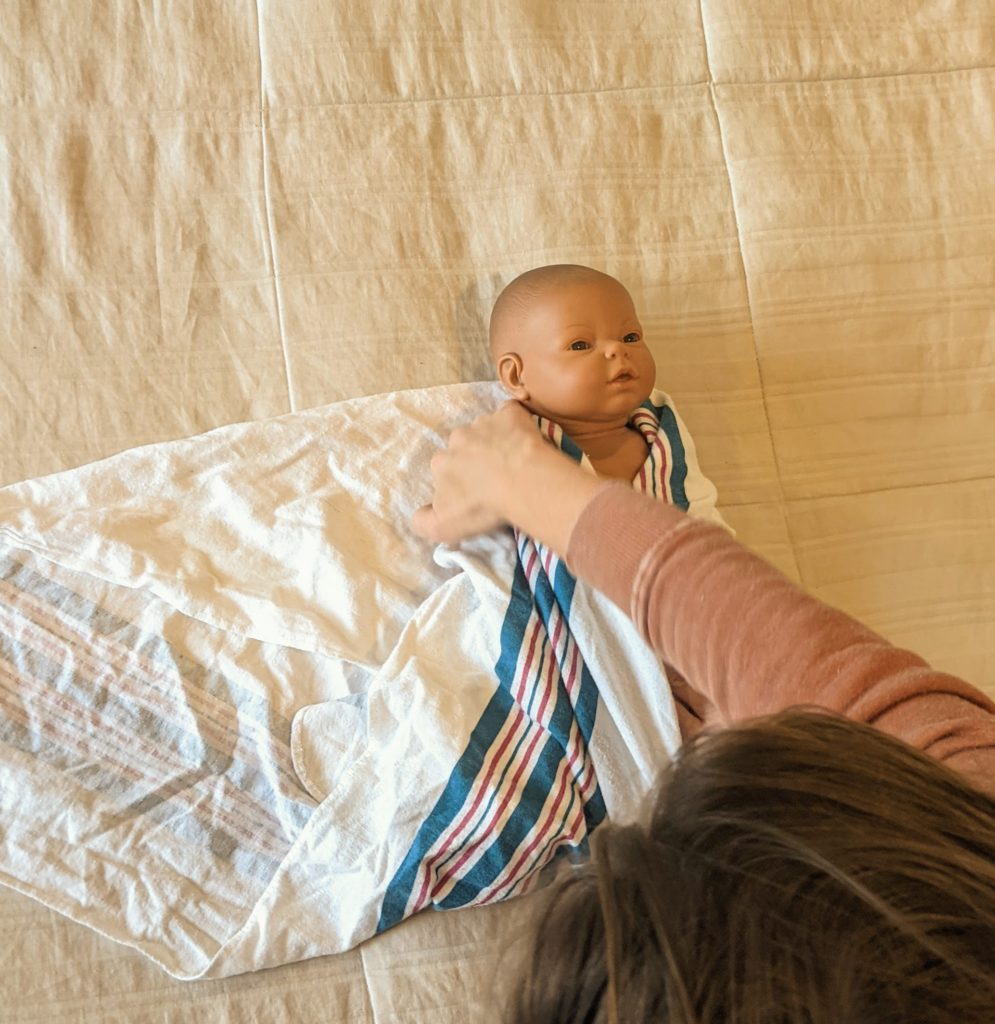
4. Take the remaining left side of the blanket, pull snug, and tuck behind the bottom

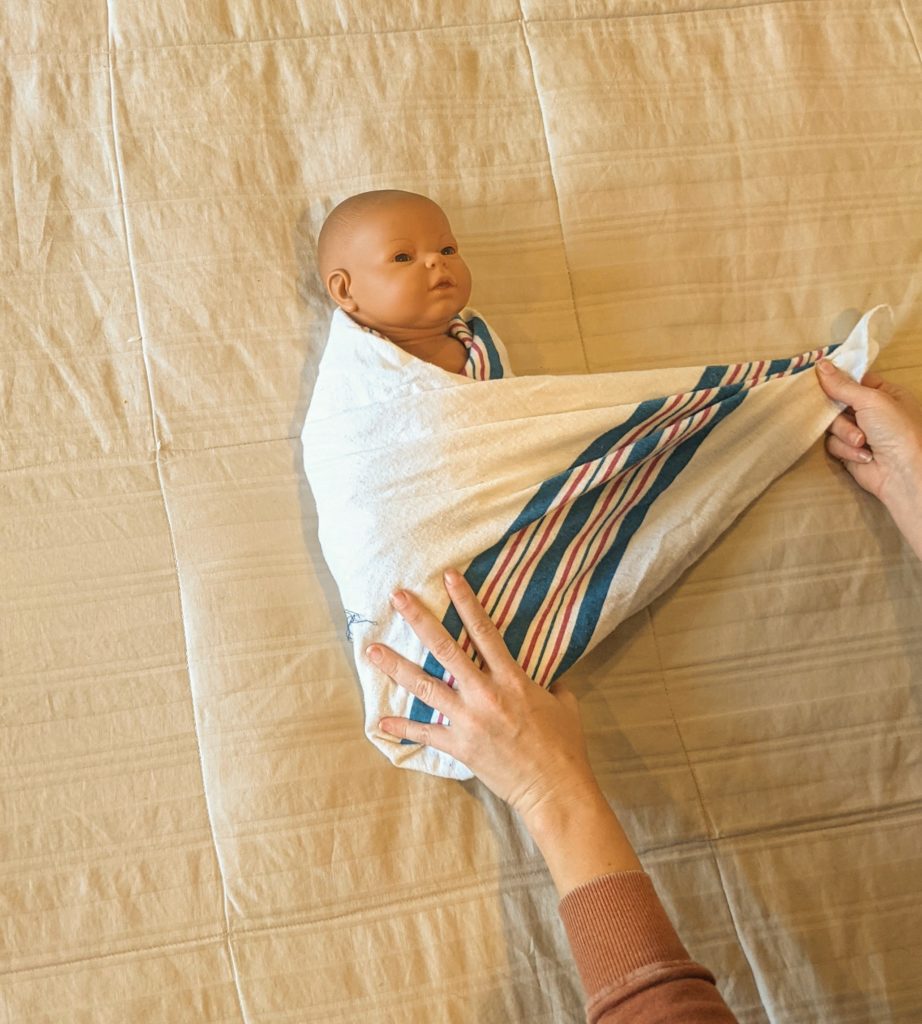
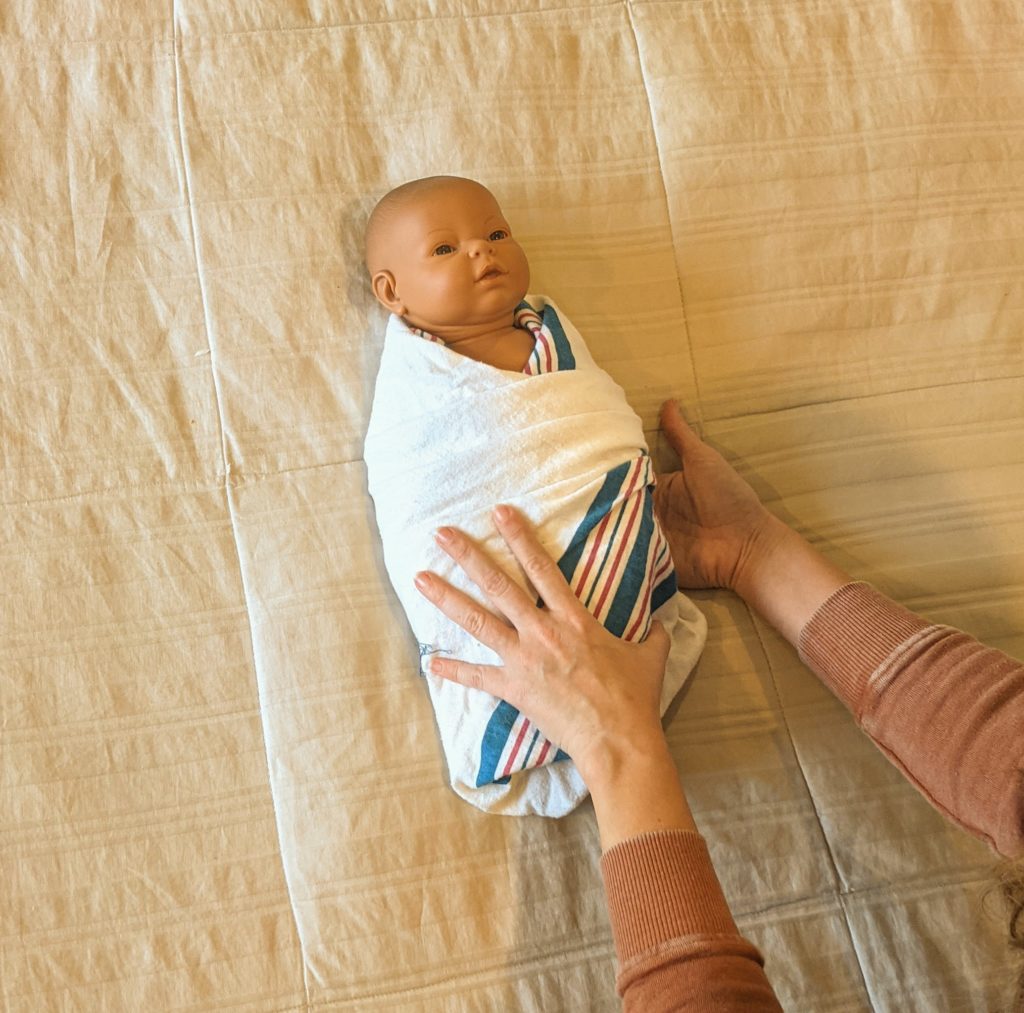
Voila! You now have the cutest little burrito in town. If it didn’t work quite as well as you thought the first time, keep working on your technique. It may take just a bit of practice to get a perfectly swaddled baby. Even us nurses had to get the hang of it. If you haven’t given birth yet, you can practice on a stuffed animal or a doll to get more comfortable with it. The best way to practice swaddling your baby is when they are calm or asleep. In time, a swaddle will become as routine as changing your baby’s diaper. Need a video tutorial? Click here.
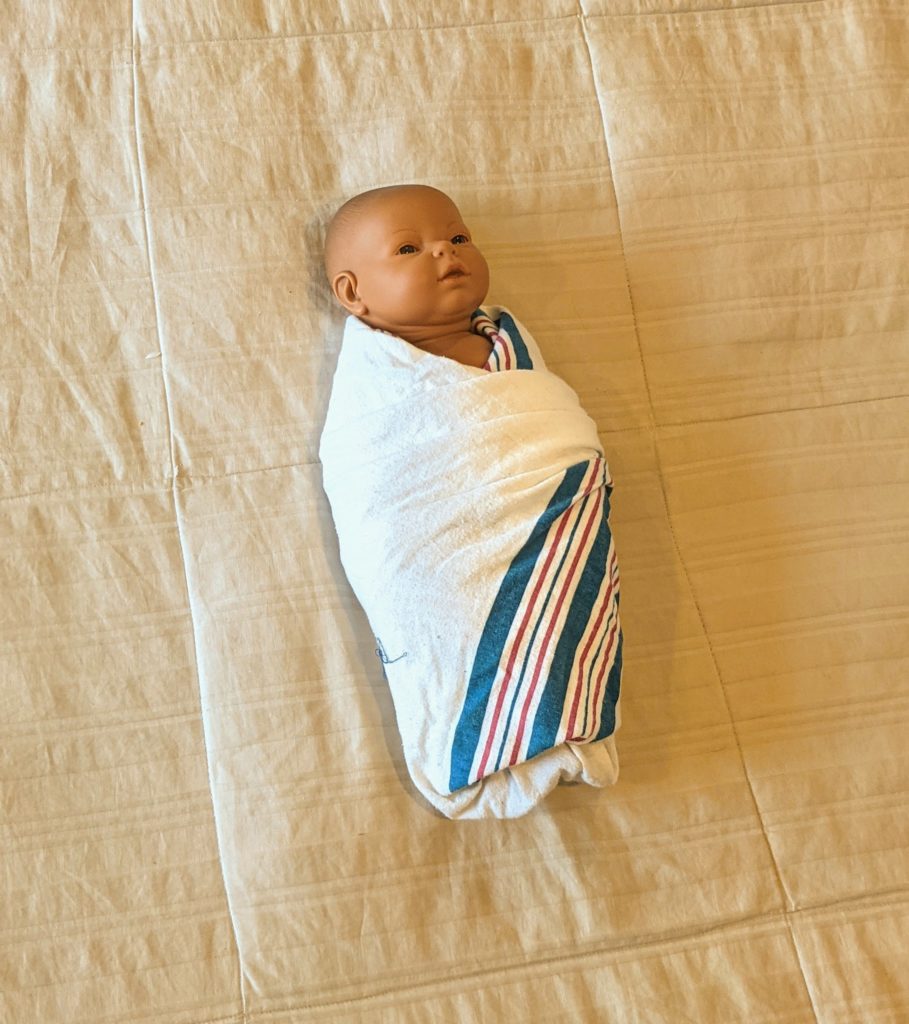
Is it safe to swaddle a baby at night?
Yes. Swaddling is a safe comfort technique to use while your baby is sleeping. The AAP (American Academy of Pediatrics) recommends you stop swaddling at two months of age. This is when a baby can begin to break free from the swaddle. At this time, I would recommend transitioning to a sleep sack. Here are the top 11 picks for the best sleep sacks for babies.
Safe Sleep Guidelines While Swaddled
- Always place your baby on their back to sleep
- No loose bedding in or around the crib
- Follow safe swaddling techniques.
- Always leave baby’s face uncovered while swaddling.
- Swaddle snugly with a swaddle blanket but not over tightly.
- Place baby on a firm mattress in a crib or bassinet. Sleep positioners are not recommended.
- No stuffed animals or other objects in baby’s sleep space.
Not following these guidelines causes an increased risk of SIDS (sudden infant death syndrome).
Don’t forget: the other sleep option I highly recommend is the sleep sack. These wearable blankets facilitate safe sleep, and you can use them far beyond two months of age. Some companies, like Halo Sleep, make them for ages zero months to five years old.
Not sure how to appropriately dress and swaddle your baby for the temperature in the home? Here’s I show you the “rules” along with TOG rating and why that matters.
It is not safe to place a swaddled baby or baby dressed in a sleep sack directly into the car seat. This can cause ill-fitted straps and buckles that will not keep baby safe in the event of a crash. Always unwrap them first, belt them in so the straps fit them appropriately, then tuck blankets around them to warm them.
Happy Swaddling and Sweet Dreams!
You may also like “Does the first poop after birth hurt?“
Post may contain affiliate links.
